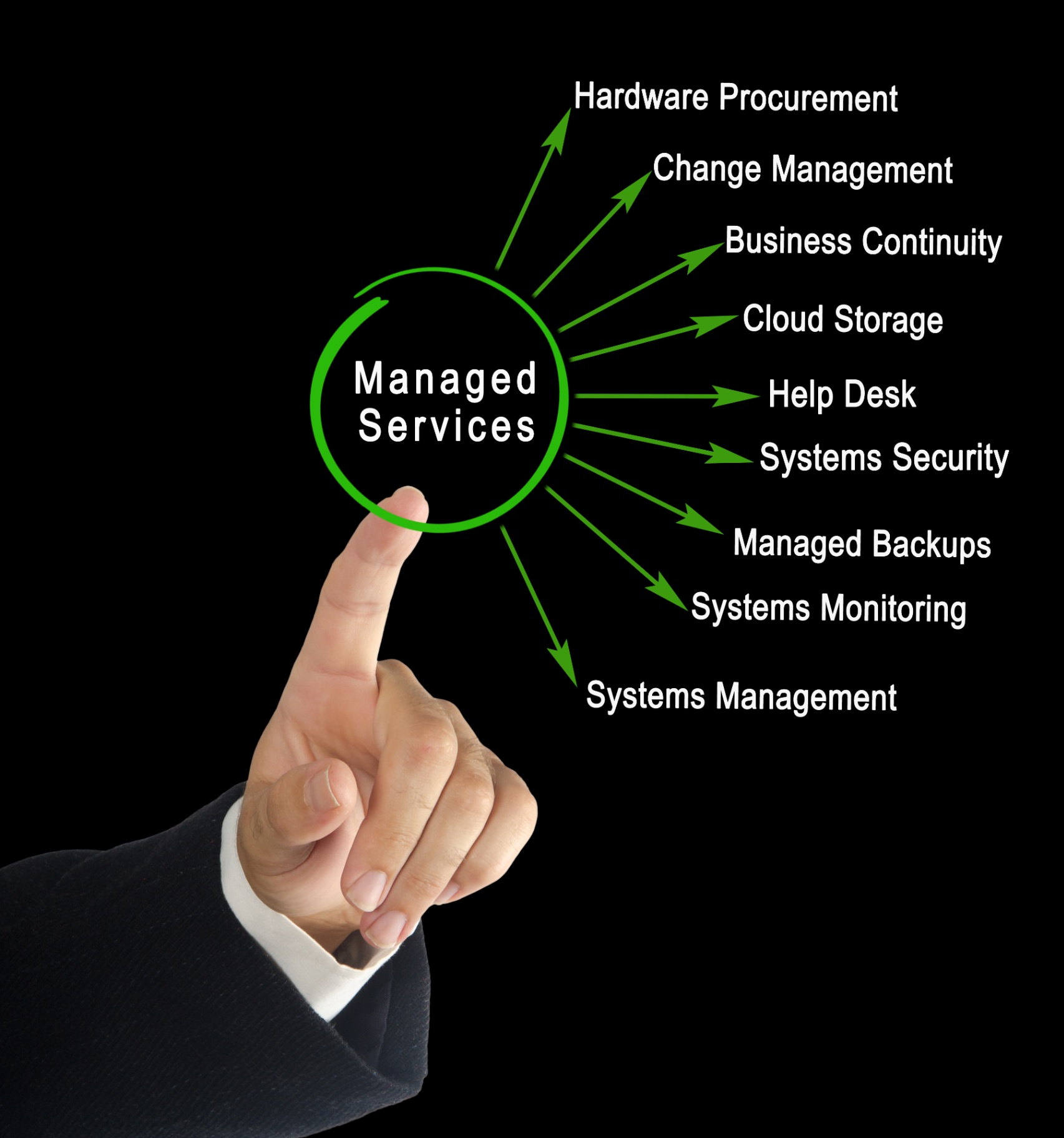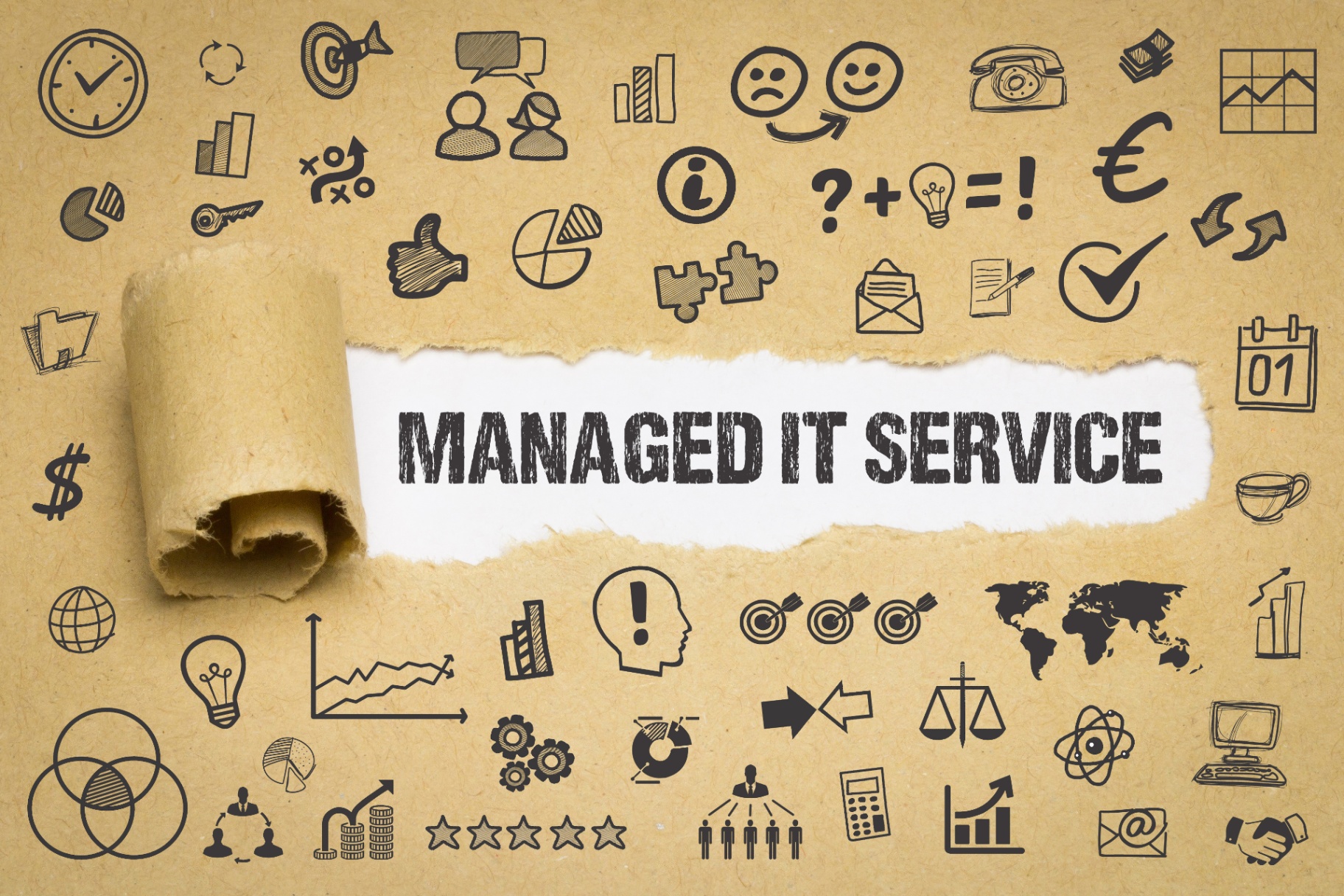Break-fix IT support might seem cost-effective when you only pay for problems as they arise, but Connecticut business owners are discovering the hard way that this reactive approach leads to unpredictable expenses, extended downtime, and significant productivity losses. When your server crashes at 2 PM on a busy Tuesday, those 10 hours of emergency repairs at $150 per hour quickly add up to $1,500 in labor costs alone. Factor in the lost revenue from halted operations, employees sitting idle, and frustrated customers unable to access your services, and the real cost can easily exceed $10,000 for a single incident.
The statistics paint an even grimmer picture. Small businesses typically experience an average of 14 hours of downtime per year, with each hour costing between $10,000 to $25,000 depending on your industry. When 60% of small businesses fold within six months of a major cyber attack, the stakes couldn't be higher. Yet many Connecticut business owners continue gambling with break-fix IT support, unaware that there's a better, more predictable path forward.
Managed IT services offer a fundamentally different approach: one that transforms IT from a cost center into a strategic business advantage. Instead of waiting for disasters to strike, managed service providers proactively monitor your systems, prevent problems before they occur, and keep your business running smoothly with predictable monthly costs. But not all managed IT services are created equal, and choosing the wrong provider can leave you worse off than before.

Before you sign any managed IT services contract in Connecticut, you need to ask the right questions. These seven critical inquiries will help you separate providers who genuinely transform your IT operations from those who simply rebrand break-fix support with a monthly subscription fee.
Question 1: What Specific Services Are Included in Your Monthly Fee?
This question cuts straight to the heart of value and transparency. Many Connecticut businesses discover too late that their "comprehensive" managed IT package excludes essential services they assumed were standard. The devil is always in the details, and managed service providers vary dramatically in what they bundle versus what they charge as expensive add-ons.
A quality managed IT services provider should clearly outline what's included in their base monthly fee. Essential services should encompass 24/7 network monitoring, regular system updates and patches, antivirus management, backup monitoring, help desk support for end users, and basic vendor management when dealing with hardware or software issues. These aren't luxury add-ons: they're foundational elements that prevent the problems break-fix services profit from solving.
Be particularly wary of providers who offer suspiciously low monthly rates only to nickel-and-dime you with charges for routine maintenance tasks. Some unscrupulous companies advertise affordable managed IT services Connecticut businesses can't resist, then hit clients with hourly charges for software updates, user account changes, or troubleshooting calls that should be covered under standard support.
Ask for a detailed service catalog that explicitly lists included services versus billable extras. A reputable provider will gladly walk through their offerings and explain why certain specialized services might incur additional costs. They'll also provide sample scenarios showing how they handle common requests, giving you confidence about what to expect from day one.
The transparency extends beyond service lists to billing practices. Your managed IT provider should offer clear, predictable monthly invoicing without surprise charges for standard support activities. This predictability allows you to budget accurately and plan for growth without worrying about fluctuating IT expenses derailing your financial planning.
Question 2: What Are Your Guaranteed Response and Resolution Times?
Response time commitments separate professional managed IT services from companies that merely promise fast support without backing those promises with concrete guarantees. This question reveals whether a provider stands behind their service commitments or hides behind vague language when accountability matters most.
Legitimate managed service providers offer Service Level Agreements (SLAs) with specific, measurable response time guarantees. These aren't marketing promises: they're contractual obligations with financial penalties if the provider fails to meet their commitments. For Connecticut businesses, these guarantees provide crucial protection against the extended downtime that can devastate local operations.
A well-structured SLA typically includes tiered response times based on issue severity. Critical problems affecting your entire network or preventing business operations might require a 15-minute response time, with technicians actively working on resolution within an hour. High-priority issues affecting multiple users could warrant a 30-minute response, while medium-priority problems might allow for longer response windows during business hours.
The key word here is "response," not "resolution." While no provider can guarantee instant fixes for every problem, they can commit to acknowledging your issue and beginning diagnostic work within specified timeframes. Resolution times are typically longer and vary based on problem complexity, but your provider should offer realistic estimates and regular updates throughout the process.
Don't accept generic promises like "we respond quickly" or "our support is available 24/7." Demand specific numbers written into your service agreement. A provider confident in their capabilities will gladly commit to measurable response times and explain how they staff their support operations to meet those commitments consistently.

Question 3: How Do You Provide Proactive Monitoring and Issue Prevention?
This question strikes at the core difference between managed IT services and traditional break-fix support. While break-fix providers profit from problems and emergencies, managed service providers succeed by preventing issues before they disrupt your business operations. Understanding their proactive approach reveals whether you're dealing with a true managed services company or a break-fix provider wearing a monthly subscription disguise.
Legitimate managed IT services Connecticut businesses should expect include continuous, automated monitoring of your entire IT infrastructure. This means 24/7/365 oversight of servers, workstations, network equipment, backup systems, and security tools. Advanced monitoring platforms can detect hundreds of potential issues: from failing hard drives and memory problems to network bottlenecks and security threats: often hours or days before they cause noticeable problems.
Ask specifically about their monitoring tools and methodologies. Quality providers use enterprise-grade remote monitoring and management (RMM) platforms that track system performance metrics, alert technicians to anomalies, and often resolve minor issues automatically without any disruption to your operations. They should monitor disk space usage, CPU and memory performance, network bandwidth utilization, backup success rates, antivirus status, and security patch compliance across all your systems.
The proactive approach extends beyond just monitoring to preventative maintenance. Your managed IT provider should perform regular system maintenance during off-hours, including installing security updates, optimizing system performance, cleaning temporary files, and testing backup integrity. This scheduled maintenance prevents the accumulation of small problems that eventually cause major failures.
Don't settle for providers who simply promise to "keep an eye on things." Demand details about their monitoring frequency, alerting thresholds, automated remediation capabilities, and regular maintenance schedules. A sophisticated managed service provider will proudly demonstrate their monitoring dashboard and explain how their proactive approach keeps your systems running optimally.
Question 4: What Is Your Approach to Cybersecurity and Compliance Management?
Cybersecurity has evolved from a technical concern to a business-critical imperative, especially for Connecticut businesses operating under increasingly strict regulatory requirements. Your managed IT services provider's approach to security and compliance reveals whether they understand modern business realities or still treat cybersecurity as an afterthought.
Professional managed IT services should include comprehensive, layered security management as a standard component, not an expensive add-on. This multi-layered approach: often called "defense in depth": includes endpoint protection on all devices, network firewall management, email security filtering, web browsing protection, regular vulnerability assessments, and employee security awareness training.
Ask specifically about their security monitoring capabilities. Quality providers offer Security Operations Center (SOC) services that provide 24/7 threat monitoring and incident response. They should explain how they detect suspicious activities, respond to potential security incidents, and communicate with your team during security events. This level of security oversight is impossible to achieve with break-fix support models.
For Connecticut businesses in regulated industries, compliance management becomes even more critical. Whether you need to maintain HIPAA compliance for healthcare data, PCI DSS standards for payment processing, or other regulatory requirements, your managed IT provider should understand these obligations and help maintain necessary documentation and controls.
Don't accept vague promises about "keeping your systems secure." Demand specifics about their security stack, incident response procedures, compliance support capabilities, and how they stay current with evolving threat landscapes. A competent provider will gladly discuss their security certifications, threat intelligence sources, and track record of protecting client data.
The conversation should also cover backup and disaster recovery planning. Your managed IT services should include regular, tested backups stored both locally and off-site, with clear recovery procedures for different disaster scenarios. They should be able to articulate specific Recovery Time Objectives (RTO) and Recovery Point Objectives (RPO) that align with your business needs.
Question 5: Who Will Actually Be Supporting Our Business Daily?
This question addresses a common source of frustration with both break-fix services and lower-quality managed IT providers: the disconnect between sales promises and actual support delivery. Many Connecticut businesses sign contracts expecting to work with experienced professionals, only to discover they're relegated to junior technicians or offshore support teams with limited expertise.
Understanding the support team structure helps you evaluate whether the provider can deliver the expertise your business requires. Ask about the qualifications, certifications, and experience levels of the technicians who will handle your account. Find out whether you'll have dedicated account management or if you'll interact with different support staff each time you contact them.
Quality managed IT services typically assign specific engineers or teams to your account, allowing them to become familiar with your infrastructure, business processes, and unique requirements. This consistency results in faster problem resolution and more strategic technology recommendations because your support team understands your environment intimately.
Inquire about escalation procedures for complex issues. While front-line technicians handle routine support requests, you need assurance that senior engineers and specialists are available for challenging problems or strategic planning discussions. The provider should clearly explain how they escalate issues and ensure you receive appropriate expertise for different types of problems.
Don't hesitate to ask about staff turnover rates and training programs. High turnover in the support organization can disrupt service quality and force you to repeatedly explain your environment to new technicians. Established managed service providers invest in ongoing training and maintain stable technical teams that develop deep expertise over time.
Consider requesting references from other Connecticut businesses similar to yours. Speaking with existing clients provides insights into actual service delivery and helps you understand whether the provider's promises align with real-world performance.

Question 6: How Do You Measure and Demonstrate Return on Investment?
Measuring ROI from managed IT services should be straightforward when you compare total IT spending, downtime costs, and productivity impacts under break-fix versus managed services models. However, many providers struggle to articulate their value proposition in concrete business terms. This question reveals whether your potential managed service provider thinks strategically about business impact or simply focuses on technical metrics.
Professional managed IT services providers should help you calculate your current total cost of IT ownership, including obvious expenses like repair calls and hardware replacement, plus hidden costs like employee productivity lost to slow systems, downtime-related revenue loss, and opportunities missed due to technology limitations. They should then demonstrate how their services reduce these costs while improving reliability and performance.
Ask for specific examples of how they've delivered measurable value to similar Connecticut businesses. Quality providers can share case studies showing reduced downtime percentages, faster problem resolution times, improved employee productivity metrics, and overall IT cost savings. They should also explain how they track and report these metrics to clients on an ongoing basis.
The conversation should cover both hard cost savings and operational improvements. While eliminating expensive emergency repair calls provides obvious financial benefits, managed IT services also enable strategic advantages like improved system reliability, enhanced security posture, better regulatory compliance, and the ability to focus internal resources on core business activities rather than IT firefighting.
Don't accept generic claims about cost savings without supporting data. Reputable providers will walk through realistic scenarios based on your current IT situation and demonstrate projected savings using industry benchmarks and their experience with similar businesses. They should also provide regular reporting that tracks actual results against projected benefits.
Question 7: What Happens If We Need to Scale or If Our Needs Change?
Your business won't remain static, and your IT support partnership shouldn't either. This question reveals whether the managed service provider thinks strategically about long-term business relationships or simply wants to lock you into rigid contracts that don't adapt to changing needs.
Quality managed IT services are designed to support business growth and evolution. Ask specifically how they accommodate common changes like adding new employees, opening additional locations, implementing new software systems, or adopting emerging technologies. The provider should explain their processes for scaling services up or down and how changes affect pricing.
Understanding contract flexibility is crucial for Connecticut businesses operating in dynamic markets. While providers need some commitment to maintain stable pricing and service levels, the best managed IT services offer reasonable flexibility for adjusting service levels, adding locations, or modifying service components as your business evolves.
Inquire about their approach to technology planning and strategic consulting. Beyond day-to-day support, your managed IT provider should help you plan for future technology needs, evaluate new solutions, and ensure your IT infrastructure supports your business goals. This strategic partnership approach distinguishes professional managed services from simple technical support contracts.
The provider should also explain their policies for contract modifications, service upgrades, and early termination if necessary. While you're entering this partnership with long-term intentions, understanding your options provides important flexibility and negotiating leverage.
Ask about their experience supporting business growth. Can they share examples of clients who've successfully scaled their operations while maintaining excellent IT support? How do they handle rapid expansion scenarios, and what resources do they have available for supporting distributed operations across Connecticut or beyond?
Making the Smart Choice for Your Connecticut Business
The transition from break-fix IT support to managed services represents more than changing vendors: it's a fundamental shift in how you approach technology strategy. By asking these seven critical questions, Connecticut business owners can identify providers who offer genuine value rather than repackaged break-fix services with monthly billing.

The right managed IT services provider brings predictable costs that simplify budgeting, proactive monitoring that prevents expensive emergencies, enhanced security that protects your business reputation, and strategic expertise that supports growth objectives. Most importantly, they provide peace of mind knowing your technology infrastructure supports your business goals rather than creating obstacles to success.
Don't rush this decision. Take time to thoroughly evaluate multiple providers, check references with other Connecticut businesses, and ensure any provider you consider can clearly answer all seven questions with specific, detailed responses. The managed IT services market includes both exceptional providers who transform client operations and mediocre companies that simply rebrand traditional break-fix support.
Remember that the lowest price rarely represents the best value in managed IT services. Focus on providers who demonstrate clear understanding of your business needs, offer transparent pricing with comprehensive service inclusions, and show proven track records of supporting Connecticut businesses similar to yours.
Your managed IT services partnership should feel like gaining a strategic technology advisor, not just another vendor relationship. The right provider will help you leverage technology for competitive advantage while eliminating the frustration, unpredictable costs, and constant fire-drilling that characterize break-fix IT support.
Take action today by reaching out to qualified managed IT services providers in Connecticut. Schedule consultations, ask these seven critical questions, and compare responses carefully. Your business deserves IT support that enhances rather than hinders your success, and managed services offer the predictability, expertise, and strategic value that break-fix simply cannot match.
The choice between continued break-fix frustrations and strategic managed IT partnership is clear. Make sure you choose a provider who can deliver on all seven critical areas, and your Connecticut business will benefit from reliable, secure, and strategically aligned technology support for years to come.

